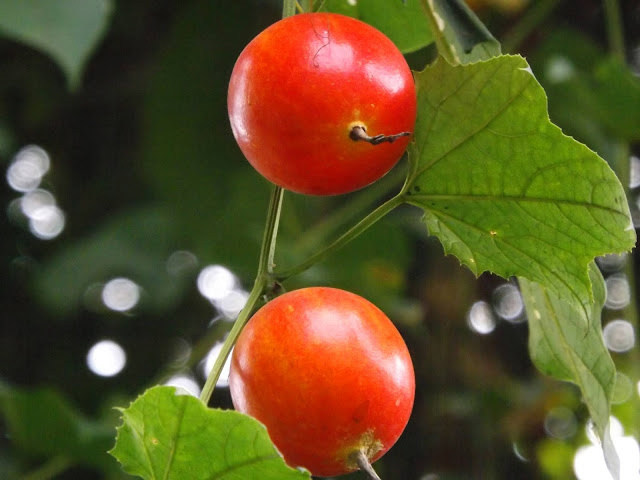Tokma or Pignut, Hyptis suaveolens
Tokma or Pignut (Hyptis suaveolens, family: Lamiaceae) is an annual herb with woody stem and profuse branches, attaining a height of 2 m. The whole body of the plant is filled with strong odor and minute hairs. It smells like Tulsi and is called Gonga tulsi or Bilati tulsi. The stem and branches are usually round but quadrangular when young. It is easily identifiable for its many characteristics.
Other names: Tokmari, Gonga tulsi, Bilati tulsi; Chonga dana (Chakma).
The plant is not indigenous, but it has adapted very well to the country's condition. That is why it is found in the hilly area, as well as in fallow lands and along roadsides of the plains. The plant is indigenous to tropical America.
Leaves are odorous, hairy, giving a velvety feel. The size and shape of the leaves vary. Its shape can be round, but most of the time it is quite triangular with cordial base; 2-12 cm long and 2-8 cm wide, with deep and irregularly toothed edges. Petiole is long.
Flowers are tiny, tubular, 5-8 mm long, arise from leaf-axil in group; usually 1 to 5 flowers. The flower is surrounded by a 5-lobbed tubular sepal.
The two-petalled flower looks strange. The upper petal of the flower is divided into two parts having two deep purple marks and the lower one into three parts. The color of the flowers is purple or pink. Purple is more common in the country.
Fruits are tubular. Seeds are blackish with whitish marks. Flowering and fruiting occur round the year. Propagation is caused by seeds. The seeds are used to make sherbet. It plays a helpful role in the growth of breast milk. It is also a tonic.
Synonyms: Ballota suaveolens, Bystropogon graveolens, Bystropogon suaveolens, Gnoteris cordata, Gnoteris villosa, Hyptis congesta, Hyptis ebracteata, Hyptis graveolens, Hyptis plumieri, Hyptis suaveolens, Marrubium indicum








Comments
Post a Comment